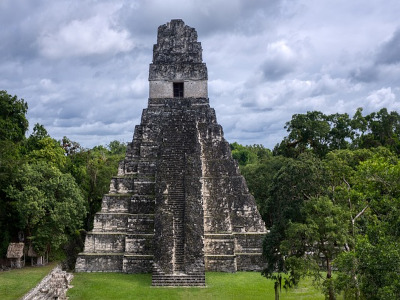The Maya people developed one of the first high cultures in the area of Mesoamerica, which includes Mexico, Guatemala, El Salvador, Honduras, and Belize. This indigenous folk was not only a really advanced civilisation but also existed for a long time (from around 1000 BC until around 1600 AD). However, there are still some descendants of the Maya spread throughout the state of Central America.
At first, they lived as hunters and gatherers, and later they learned certain crafts, which opened the world of trade for them. With the passing of time, a complex society developed with multiple city states that were ruled by one ruler. There were also different social classes, like the upper class and the royalty, then the craftsmen and sailsmen, and the slaves and servants at the very bottom of the hierarchy.
Furthermore, they played ball games during ritual ceremonies. Excavations revealed the courts on which they played. Also, these balls were made from caoutchouc, which is a natural rubber. The most important food for them was corn, since even their history of creation mentions it. Apparently, the crops were first on earth, and from them, the people developed. The fields on which the corn grows are called “milpa.” There it grows along with beans and pumpkins because the corn helps the beans to trail, the beans provide nitrogen, and the pumpkins provide shadow to the ground with their big leaves and save it from drought. In order to pay respect and apologise to the gods, the Maya prayed before cultivating the fields. That shows what a huge role religion played in their daily lives.
Another popular plant for the Maya was the cacao plant. They brewed from it a tasty drink for ritual purposes, which already back then had the name “Xocolatl”. The male members of the Maya folk hunted monkeys, deer, and birds and cultivated the fields, while the women cooked and weaved.
Moreover, the women wore dresses, and the men usually only wore loincloths. However, the rulers were dressed more splendidly, with many layers of clothes, jackets, and decorated sandals. It was also common to wear jewellery on the fingers, noses, and lips. Even tattoos were popular as physical jewellery.
Other than that, the Maya lived in houses without doors, only a bell over the entrance announced visitors. The roofs of the houses consisted of straw, and there were no windows. A typical architectural style in Maya cities was the corbelled arch. Sometimes it is also called a fault arch because the stones get stabilised by the pressure from above. With this technique, the stones overlap slightly every time, and, in general, the constructions are quite pointy.
One of the biggest inventions of the Maya was their calendar, which already had 365 days. Many people also probably know about the prophecy of the Maya, which apparently spoke about the end of the world in 2012. Nowadays, we assume that they meant the turn of the time, since one calendar cycle, also called “Baktun” took them 400 years; it was just like the change of a century, and no member of the Maya actually expected the end of the world.
Another invention of the Maya was the number zero. At first, they developed a counting system that consisted of dots and lines. They could express numbers until 19, but then they needed to come up with a symbol that expressed 20. So, they invented the zero, which resembles a snail shell. Apart from the Maya, the Babylonians and Indians also used zero. The Indians, though, were the ones who not only counted but also calculated with it.
The downfall of the Maya empire had already started before the Spanish arrived in Mexico. The Maya tribes fought each other, and other indigenous neighbouring folk groups dispelled them. Other issues, like drought years, bad harvests, and epidemics, contributed to their weakening and decrease in population numbers. Then, in 1519, the European conquerors arrived on the Yutacan Peninsula in Mexico. It took a long time to fully subdue the Maya since they did not really have a geographical centre of power, and only 16 minor states were left. Eventually, in 1697, Hernán Cortés’ army managed to fully conquer them since they were so weakened already.

Sources:
https://www.kinderzeitmaschine.de/fruehe-kulturen/mesoamerika/lucys-wissensbox/maya/
https://www.prosieben.de/serien/galileo/news/maya-leben-kultur-und-der-kampf-fuer-die-umwelt-329605
https://www.spiegel.de/wissenschaft/mensch/weltuntergang-2012-maya-kalender-besagt-nicht-das-ende-der-erde-a-873683.html
